Listed below are some of the better-known Aboriginal and Torres Strait Islander warriors who defended their lands in the 19th and early 20th centuries and examples of where you can find information about them. While some information is on the internet, other sources are books, CDs, encyclopaedias, films, journal articles, news items and videos. On this website, see the Bibliography, Books, Films, Journal Articles, News, and Videos pages for more information on warriors. Enjoy searching for more information about these warriors yourself in libraries and online. One useful book is Aboriginal Heroes of the Resistance: From Pemulwuy to Mabo, published by Action for International Development, Surry Hills, Sydney, New South Wales, 1999. The National Library of Australia’s online database, Trove at https://trove.nla.gov.au is an excellent source for newspaper articles, audio recordings, books, videos and other sources on a wide range of topics. You might also find information about Aboriginal and Torres Strait Islander warriors in the Australian Institute of Aboriginal and Torres Strait Islander Studies (AIATSIS) databases. You can find AIATSIS at https://www.aiatsis.gov.au
First Fighters Collection
First Fighters is an educational resource targeted for students in Year 5/6 and Years 7/8. The First Nations people have been fighting to defend their Countries since British colonisation in 1788. These units recognise the impact Indigenous warriors and soldiers have made through historical accounts of war within Australia and worldwide. It honours Indigenous warriors and soldiers through stories of fighting for their ancestral Countries and fighting for Australia.
Unit 1: Frontier Wars (1780s–1920s) is available free for download from the AIATSIS shop: https://shop.aiatsis.gov.au/collections/year-5-and-6-teaching-resources
Bussamarai
A shorter biography of Bussamarai by Patrick Collins is in Indigenous Australia, Dictionary of National Biography: https://ia.anu.edu.au/biography/bussamarai-29700

Calyute
Calyute (flourished 1833–1840), also known as Kalyute, Galyute or Wongir, was an Aboriginal resistance leader of the Pinjareb or Murray River tribe 100 kilometres south of Perth, Western Australia. He was involved in a number of incidents including the Battle of Pinjarra in 1834 in which Aboriginal people and a soldier were killed. For information on Calyute see, for example:
- the entry on Calyute in Horton, David ed. 1994, The Encyclopaedia of Aboriginal Australia (EAA), Vol. 1, pp. 176–177
- Neville Green, Calyute (flourished 1833–1840), in the Indigenous Australia section, Australian Dictionary of Biography, National Centre of Biography, Australian National University: http://adb.anu.edu.au/biography/calyute-12832
Dhakiyarr Wirrpanda
Dhakiyarr Wirrpanda (c. 1900–1934) was a Yolgnu Aboriginal leader born near Blue Mud (Caledon) Bay in the Northern Territory. He was charged with the murder of Constable Albert Stewart McColl. After a controversial Darwin trial, Dhakiyarr Wirrpanda was sentenced to death. As the case was heard in the Northern Territory, an appeal, the first relating to an Aboriginal person, was made to the High Court of Australia, which ordered his release and return to Country on 8 November 1934. The case, which overturned the verdict of the Northern Territory jury and the judge’s death sentence, brought into focus the unfair treatment of Aboriginal people and their rights to fair trials. Shortly after his release, Dhakiyarr Wirrpanda disappeared. What happened to him is still a mystery, although it is possible that he was murdered. For background on Dhakiyarr Wirrpanda’s story and court case see for example:
- Mickey Dewar, ‘Dhakiyarr Wirrpanda (1900–1934)’, an entry in the Indigenous Australia section, Australian Dictionary of Biography, National Centre of Biography, Australian National University: http://adb.anu.edu.au/biography/dhakiyarr-wirrpanda-12885
- A collage of newspaper cuttings about Dhakiyarr’s High Court case is available online on the National Archives of Australia’s website:
https://www.naa.gov.au/learn/learning-resources/learning-resource-themes/first-australians/history/yolgnu-elder-dhakiyarr-wirrpanda-high-court-case, accessed 29 April 2021
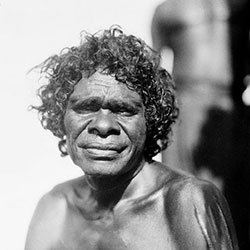
Dundalli
Dundalli (c. 1820–1855) was an Aboriginal resistance leader born in the Blackall Range north-west of Moreton Bay, Queensland. On the anniversary of his public hanging on 5 January 1855, a remembrance service was held at St Mark’s Church, Buderim, Queensland. The same day the Frontier Wars Installation was officially opened in the Buderim Nature Refuge. Some sources for Dundalli’s story are:
- David Lowe 1994, ‘Dundalli of the Ningy-Ningy,’ in Forgotten Rebels: Black Australians Who Fought Back, pp. 27–31, available on Dr Gary Foley’s Kooriweb:
http://www.kooriweb.org/foley/resources/pdfs/127.pdf, accessed 27 July 2015 - Libby Connors’ 2005 entry on Dundalli in the Australian Dictionary of Biography, National Centre of Biography, Australian National University:
http://adb.anu.edu.au/biography/dundalli-12895 - Dale Kerwin 2010, ‘Aboriginal heroes: episodes in the colonial landscape,’ Queensland Historical Atlas:
http://www.qhatlas.com.au/content/aboriginal-heroes-episodes-colonial-landscape, accessed 27 July 2015 - Tony Moore, ‘Queensland’s hidden warrior,’ Brisbane Times, 3 May 2015:
http://www.brisbanetimes.com.au/queensland/queensland-historys-hidden-warrior-20150502-1my8ac.html, accessed 27 July 2015 - Libby Connors 2015, Warrior: a Legendary leader’s dramatic life and violent death on the colonial frontier,
Allen & Unwin
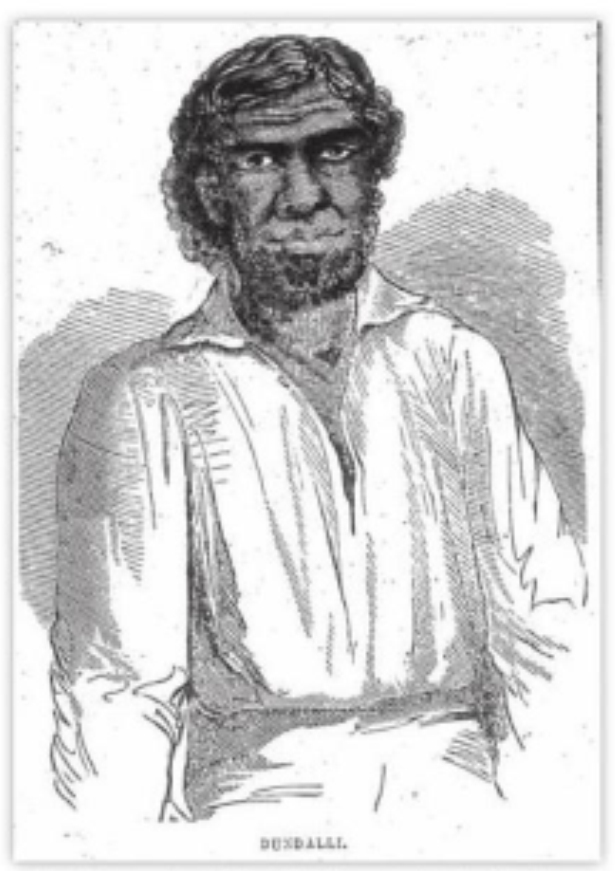
Eumarrah (1798–1832) (also spelt Umarra or Umarrah)
An Aboriginal leader of the Stoney Creek or Tyerer-note-panner people, Eumarrah was born in 1798 in the Tasmanian midlands around Campbell Town on the island then known as Van Diemen’s Land. Also known as Kanneherlargenner and Moleteheerlaggenner, Eumarrah led his people when conflict broke out with European colonists in 1826–27. Late in 1828 Gilbert Robertson captured Eumarrah and his first wife, Laoninneloonner, who died in 1831. Eumarrah spent a year in Richmond gaol after which, in 1830, he joined George Augustus Robinson’s ‘friendly mission’ through the south-west of Tasmania, leaving Robinson and his party in May. After trekking back to his homeland area, Eumarrah joined Lieutenant-Governor Sir George Arthur’s ‘Black Line’ operation that was aimed at rounding up Aboriginal people still attempting to live traditional lives. However Eumarrah soon left this operation for the Tamar and Esk valleys and the north-east of Tasmania where he engaged in conflicts with colonists.
From October 1831 to January 1832, Eumarrah was one of the Tasmanians who accompanied Robinson on his mission to the Big River people, both helping and hindering Robinson’s search for them. The party later accompanied Robinson to Hobart Town and Eumarrah went with him to Launceston and Flinders Island. On 24 March 1832 Eumarrah died in a Launceston Hospital from dysentery. He is buried in St John’s graveyard, Launceston.
Woolaytoopinneta, Eumarrah’s second wife, died in May 1832. Among Eumarrah’s relatives was Planobeena (Fanny) who was the wife of Tunnerminnerwait (c.1812–1842) (see entry for him below).
More information about Eumarrah is in Michael Roe’s entry on him in the Australian Dictionary of Biography, Eumarrah (1798–1832)’, National Centre of Biography, Australian National University, https://adb.anu.edu.au/biography/eumarrah-12905/text23313, published first in hardcopy 2005, accessed online 29 April 2021. See also Robert Cox, Broken Spear: The untold story of Black Tom Birch, the man who sparked Australia’s bloodiest war, Wakefield Press, 2021.
Jandamarra (‘Pigeon’)
Jandamarra (‘Pigeon’) (c. 1870–1897) was a Bunuba warrior who led an armed insurrection against Europeans who attempted to set up a large station on Bunuba land in the Kimberley region of Western Australia.
For more information on Jandamarra see for example:
- the entry by Howard Pedersen on Jandamarra in Indigenous Australia, Australian Dictionary of Biography, National Centre of Biography, Australian National University: http://ia.anu.edu.au/biography/jandamarra-8822
- David Lowe 1994, ‘Jandamarra of the Bunuba,’ in Forgotten Rebels: Black Australians Who Fought Back, pp. 38–45, available online on Dr Gary Foley’s Kooriweb:
http://www.kooriweb.org/foley/resources/pdfs/127.pdf, accessed 27 July 2015 - Howard Pedersen and Banjo Woorunmurra 1995, Jandamarra and the Bunuba resistance, Magabala Books, Broome, Western Australia
- Craig Cormick 1998, ‘Jandamarrajandamarrajandamarra!’ in Unwritten Histories, Aboriginal Studies Press, pp. 137–149
- W Campbell Charnley 2010, Pigeon, Hesperian Press, Carlisle, Western Australia
- Kevin Moran 2011, Sand and Stone: Pigeon, Hesperian Press, Carlisle, Western Australia
- Mark Greenwood 2013, Jandamarra, Allen & Unwin, Crow’s Nest, New South Wales
- Emily Jane Smith, ‘Jandamarra: : The outlaw who fought to save his country and people from colonisation’, ABC Kimberley, 4 July 2018:
http://www.abc.net.au/news/2018-07-04/iconic-australian-landscape-home-to-fierce-warrior/9936054
Videos:
- Jandamarra’s War, Electric Pictures, 4 May 2011 on YouTube: https://www.youtube.com/watch?v=cXejE5DXR9E
- Jandamarra–Aboriginal Geronimo, Rebel Films, 12 March 2017 on YouTube: https://www.youtube.com/watch?v=t4a2Ik5YvT0
- Story of Janadmarra, Ben Beeton, 24 March 2017 on YouTube: https://www.youtube.com/watch?v=wNLv1eWLeNA
Kickerterpoller
Kickerterpoller (Birch’s Tom, Black Tom, Tom Birch) (d. 1832), a contemporary of Musquito (see below), was a resistance fighter and key leader in the Tasmanian Black War in the 1820s. He also joined George Augustus Robinson’s ‘Friendly Mission’. Less well-known than some of his compatriots, calls have been made for Kickerterpoller to be memorialised. More information on Kickerterpoller can be found in sources such as:
- Cassandra Pybus, ‘A Self-Made Man’ in Reading Robinson: Companion Essays to George Robinson’s Friendly Mission, Monash University Publishing, 2012
- Lyndall Ryan, Tasmanian Aborigines: A History Since 1803, Allen & Unwin, 2012
- Robert Cox, ‘Black Tom Birch: Fact and Fiction,’ Tasmanian Historical Research Association, Minutes, 12 June 2012
- Nicholas Clements, The Black War: Fear, Sex and Resistance in Tasmania, University of Queensland Press, 2014
- Robert Cox, Broken Spear: The untold story of Black Tom Birch, the man who sparked Australia’s bloodiest war, Wakefield Press, 2021
- University of Tasmania, Telling Places in Country, Kickerterpoller (Black Tom), Aboriginal Life Stories–Robinson’s Clan Guides: https://www.utas.edu.au/telling-places-in-country/historical-context/historical-biographies/kickerterpoller, accessed 7 March 2022
Major
Mannalargenna
Mannalargenna, or Mannalargenner, was a Tasmanian Aboriginal warrior, leader, skilled diplomat and shaman. He waged war on colonists after sealers betrayed him. Mannalargenna Day is celebrated in Tasmania annually on the fist Saturday in December. You can find more information about Mannalargenna in sources like:
- Department of Premier and Cabinet, Tasmania, Calendar of Aboriginal Significant Dates and Events (check under December): https://www.dpac.tas.gov.au/divisions/ssmo/aboriginal_employment_strategy/aboriginal_significant_dates
- The Encyclopaedia of Aboriginal Australia, Vol. 2, p. 654
- Lyndall Ryan, Tasmanian Aborigines–A History Since 1803, Allen & Unwin, 2012
- Nicholas Clements, The Black War: Fear, Sex and Resistance in Tasmania, Queensland University Press, 2014
- Henry Reynolds and Nicholas Clements, Tongerlongeter: First Nations Leader and Tasmanian War Hero, NewSouth Publishing, 2021
- Robert Cox, Broken Spear: The untold story of Black Tom Birch, the man who sparked Australia’s bloodiest war, Wakefield Press, 2021
- University of Tasmania, Telling Places in Country, Mannalargenna, Aboriginal Life Stories–Clanspeople Encountered: https://www.utas.edu.au/telling-places-in-country/historical-context/historical-biographies/mannalargenna, accessed 7 March 2022
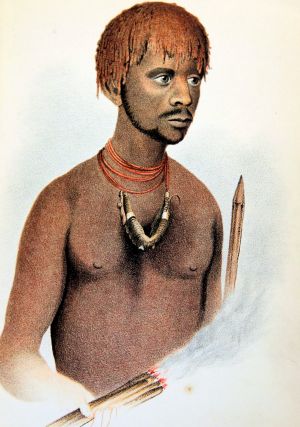
Maulboyhenner
Maulboyhenner or Maulboyheenner, was a young Aboriginal warrior from Tasmania. You can read more about him in books like:
- Lyndall Ryan’s, Tasmanian Aborigines–A History Since 1803, Allen & Unwin, 2012, or Clare Land’s ‘Tunnerminnerwait and Maulboyheenner: the involvement of Aboriginal people from Tasmania in key events of early Melbourne’, published in 2014 and
- Robert Cox, Broken Spear: The untold story of Black Tom Birch, the man who sparked Australia’s bloodiest war, Wakefield Press, 2021
- Sandy Guy’s article ‘The Harmers Haven Murders’ in Traces, Volume 2, 2018, pp. 16–19, describes the alleged involvement of Mauboyheenner in the shooting of two whalers and two other men, William Cook and ‘Yankee’, not far from Cape Paterson, Victoria about 6 October 1841.
- A ceremony to dedicate a memorial to Maulboyhenner and Tunnerminnerwait at the corner of Victoria and Franklin Streets, Melbourne, Victoria was held on 11 September 2016. See Carolyn Webb’s story in
The Age: http://www.theage.com.au/victoria/monument-to-aboriginals-1842-execution-first-step-to-recognising-brutal-past-20160911-grdvbx.html - The City of Melbourne’s website has a page dedicated to Maulboyhenner and Tunnerminnerwait. Read more about their story here: https://www.melbourne.vic.gov.au/about-melbourne/melbourne-profile/aboriginal-culture/Pages/tunnerminnerwait-and-maulboyheener.aspx
Montpeliater
Montpeliater, Montpelliatta, or Muntipiliyata, was a leader of an intrepid band of Tasmanian Aborigines. You can find out more about him in books like:
- Lyndall Ryan, Tasmanian Aborigines–A History Since 1803, Allen & Unwin, 2012
- Henry Reynolds, Forgotten War, NewSouth Publishing, 2013, and Nicholas Clements , The Black War: Fear, Sex and Resistance in Tasmania, Queensland University Press, 2014
- Henry Reynolds and Nicholas Clements, Tongerlongeter: First Nations Leader and Tasmanian War Hero, NewSouth Publishing, 2021
- Robert Cox, Broken Spear: The untold story of Black Tom Birch, the man who sparked Australia’s bloodiest war, Wakefield Press, 2021
Multuggerah
In 1843 Multuggerah, a Jaggerah (Jagera) warrior, led his people against Europeans in the Battle of One Tree Hill in the Lockyer Valley near Toowoomba, Queensland. Today this hill is known as Table Top or Tabletop Mountain. You can find more about Multuggerah at:
- http://www.thechronicle.com.au/news/apn-plaque-honours-aboriginal/2728/
- http://monumentaustralia.org.au/themes/conflict/indigenous/display/92754-multuggerah
- http://www.thechronicle.com.au/news/aboriginal-warrior-battled-elite-british-soldiers/3020583/
- Dr Mark Copland has created a blog on Multuggerah at: https://multuggerahway.blogspot.com/ He has also written about Multuggerah in an opinion piece, ‘Multuggerah Way honours shared past’, The Queensland Times,
17 May 2016: https://www.qt.com.au/news/multuggerah-way-honours-shared-past/3027219/ - Dr Ray Kerkove has written extensively on Multuggerah. Examples of his work are: Multuggerah, Indigenous Australia, Dictionary of National Biography: https://ia.anu.edu.au/biography/multuggerah-29904
Report: Indigenous Use and Indigenous History of Rosewood Scrub for Jagara Daran, 2015 and Toowoomba Bypass: Lockyer Valley and Helidon with special attention to events surrounding the ‘Battle of One Tree Hill’, A Report for Jagera Daran, 2015. A radio interview about Multuggerah by Dr Kerkove was broadcast on on 4ZZZFM on 29 October 2017. Dr Kerkhove and Frank Uhr’s book The Battle of One Tree Hill was published by Boolarong Press in 2019. The book is about the frontier war on the Lockyer, Moppy and Multuggerah. - Two articles by Frank Uhr on the Battle of One Tree Hill and Multuggerah appeared in the Journal of the Royal Historical Society of Queensland in 2001 and 2003 respectively:
- ‘The Raid of the Aborigines: a brief overview and background to the poem’, Journal of the Royal Historical Society of Queensland, Vol. 17, No. 12, (November 2001), pp. 559–561, and
- ‘September 12, 1843, the Battle of One Tree Hill: a turning point in the conquest of Moreton Bay, Journal of the Royal Historical Society of Queensland, Vol. 18, No. 6, (May 2003), pp. 241–255. Search the National Library of Australia’s Trove at trove.nla.gov.au for online and other references.
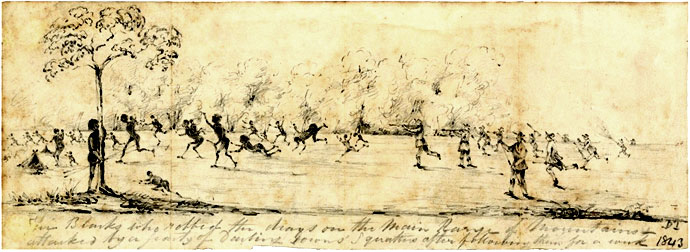
The Blacks who are the object of the doings on the Main Range of Mountains attacked by a party of Darling Downs squatters after provoking them for a week.’ Pencil Sketch by Thomas Domville-Taylor, from the Patty Ffoulkes Scrapbook, 1840-1844 In 1843 Jaggerah people, led by Multuggerah, blocked supply routes to the Darling Downs. This led to a violent confrontation in the Lockyer Valley near today’s Toowoomba, Queensland, between squatters and Aborigines, known as the Battle of One Tree Hill where the squatters were defeated.
Musquito
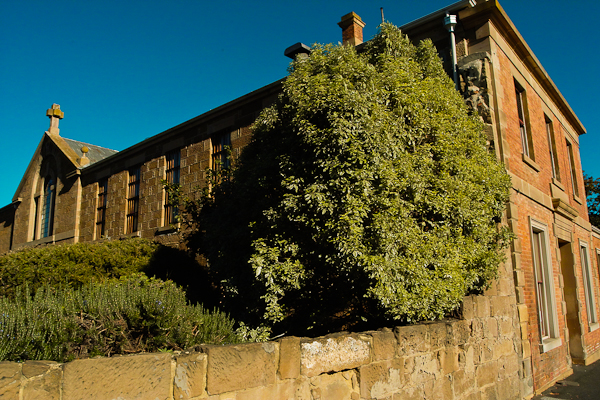
Old Hobart Gaol, where Musquito was hanged.
Nemarluck
Nemarluck (1911–1940) was an Aboriginal leader born c. 1911 in the Daly River Region of the Northern Territory. In the 1930s Aboriginal resistance took place on both sides of the Northern Territory and Western Australian borders. You can find information about Nemarluck in sources like:
- The Encyclopaedia of Aboriginal Australia, Vol. 2, pp. 770–771 and Bruce Shaw’s entry on him, ‘Nemarluck (1911–1940)’, in the Australian Dictionary of Biography, National Centre of Biography, Australian National University: http://adb.anu.edu.au/biography/nemarluk-11222
- The National Archives of Australia also has files on Nemarluck as does the Northern Territory Police Museum and Historical Society Inc.
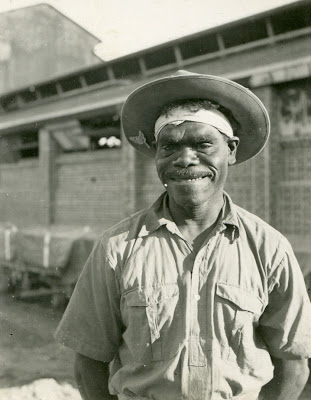
Pemulwuy
Dubbed as ‘the Aboriginal Ned Kelly’, Pemulwuy (1750–1802) was a Dharug warrior, born near Botany Bay on the northern side of the George’s River, Sydney, New South Wales. He strongly resisted the incursions of colonists into his people’s territory. There are entries about him in:
- The Encyclopaedia of Aboriginal Australia, Vol. 2, p. 854 ,
- JK Kohen’s entry on him in the Indigenous section, Australian Dictionary of Biography: http://adb.anu.edu.au/biography/pemulwuy-13147
- and in the Dictionary of Sydney. Search the Dictionary of Sydney: https://dictionaryofsydney.org/entry/pemulwuy for Keith Vincent Smith’s 2010 article on Pemulwuy, or under ‘People’.
- Jonathan Lim’s book, The Battle of Parramatta–21 to 22 March 1797, Australian Scholarly Publishing, 2016, revisits the story of Pemulwuy, using knowledge of the geography and history of the arrival of Europeans at and around Parramatta as well as little-known historian sources.
- The ABC’s Nightlife program with Philip Clark ran a program ‘Pemulwuy: the most famous resistance fighter in the frontier wars’ on 6 April 2020: Listen to historian David Hunt recount Pemulwuy’s story here: https://www.abc.net.au/radio/programs/nightlife/history-dave-hunt-pemulway/12124258
- Read Amelia Dunn’s story ‘Pemulwuy: The Aboriginal man who waged a resistance on the British’ from SBS News, 23 January 2021:
https://www.sbs.com.au/news/pemulwuy-the-aboriginal-man-who-waged-a-resistance-on-the-british/4ff4e290-cc0f-49e5-bd10-ab9bf52452ee
Tarerenorer (aka Walyer)
http://adb.anu.edu.au/biography/tarenorerer-13212
This entry was originally in the Australian Dictionary of Biography, National Centre of Biography, Australian National University.
See also, for example, Ian McFarlane’s entry in the Companion to Tasmanian History:
https://www.utas.edu.au/library/companion_to_tasmanian_history/W/Walyer%202.htm, and ‘Australia’s True Heroes–Walyer (AKA Te Nor and Tarenorerer)’ on Black Fit Blogs:
https://blackfit.com.au/blogs/keto-shepards-pie/australias-true-heroes-walyer-aka-te-nor-and-tarenorerer, accessed on 29 April 2021
Tongerlongerter
Tongerlongerter was one of the leading Tasmanian resistance leaders, shot in the arm during an ambush. The shattered limb had to be amputated above the elbow. You can find information about him in books like:
- Lyndall Ryan, Tasmanian Aborigines–A History Since 1803, Allen & Unwin, 2012
- Henry Reynolds, Forgotten War, NewSouth Publishing, 2013
- Nicholas Clements, The Black War: Fear, Sex and Resistance in Tasmania, Queensland University Press, 2014
- Henry Reynolds and Nicholas Clements, Tongerlongeter: First Nations Leader and Tasmanian War Hero, NewSouth Books, 2021
Trugannini
Cassandra Pybus, Truganini: Journey through the apocalypse, Allen & Unwin, 2020, is listed in the Bibliography and Books pages on this website.
Trugannini is also mentioned in Robert Cox, Broken Spear: The untold story of Black Tom Birch, the man who sparked Australia’s bloodiest war, Wakefield Press, 2021
See also, University of Tasmania, Telling Places in Country, Trugannini, Aboriginal Life Stories–Robinson’s Clan Guides: https://www.utas.edu.au/telling-places-in-country/historical-context/historical-biographies/trugannini, accessed 7 March 2022
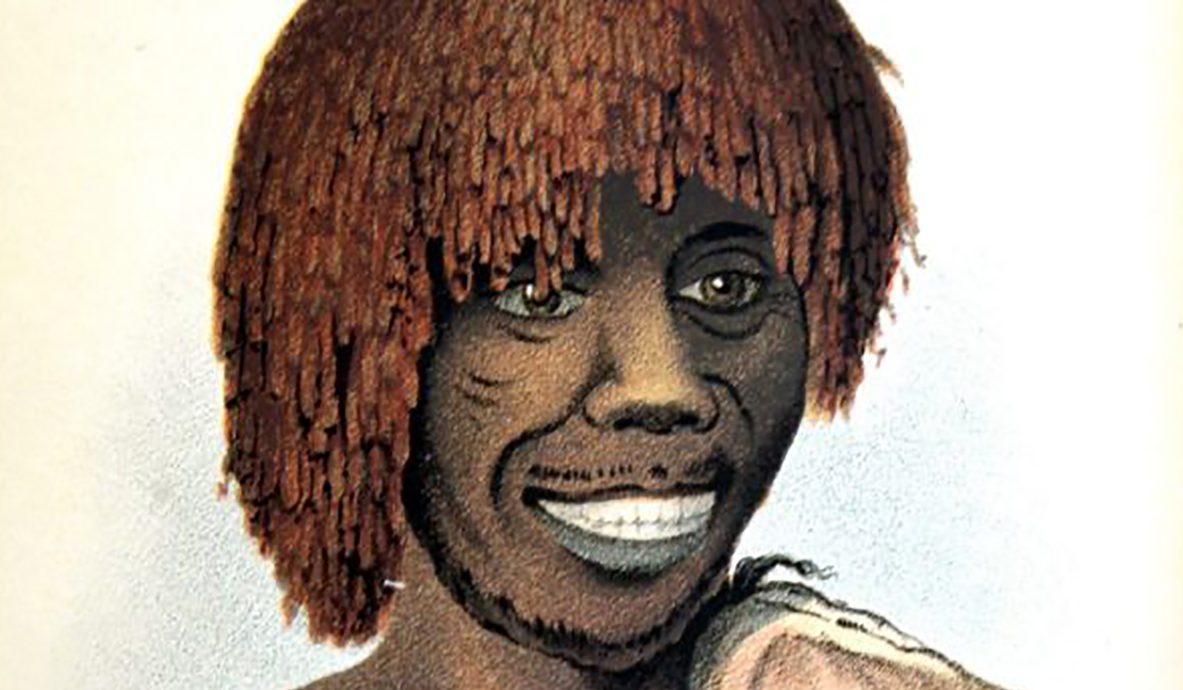
Tunnerminnerwait (Pevay)
Tunnerminnerwait(e) (c.1812–1842), also known as Pevay, Jack of Cape Grim, or Jack Napoleon) was a Tasmanian Aboriginal resistance fighter. Tunnerminnerwait(e), which means ‘waterbird’, was born into the Parperloihener people of Robbins Island, Tasmania near the site of the horrific massacre of Aboriginal people in February 1828 at Cape Grim. In 1830 Tunnerminnerwait joined George Augustus Robinson’s ‘Friendly Mission’ after the decimation of the former’s tribe. Tunnerminnerwait and other Aboriginal people attempted to kill Robinson in 1832. In 1834 Tunnerminnerwait was taken to Flinders Island. Robinson took him and Maulboyheenner to Port Phillip (Melbourne), Victoria in 1839 where they were convicted in 1841 of the murder of two whale hunters after a six-week battle with colonists in the Dandenongs and Mornington Peninsula. In January 1842 Tunnerminnerwait and Maulboyheenner were the first two people to be publicly executed in Melbourne. At the time they were seen as ‘bloodthirsty outlaws’, but today many people view them as brave freedom fighters who tried to save their country and people from invading colonists. In recent years, the City of Melbourne voted to erect a memorial in their honour. A ceremony to dedicate the memorial on the corner of Victoria and Franklin Streets, Melbourne was held on 11 September 2016.
See Carolyn Webb’s story in The Age: http://www.theage.com.au/victoria/monument-to-aboriginals-1842-execution-first-step-to-recognising-brutal-past-20160911-grdvbx.html
The City of Melbourne’s website has a page dedicated to Maulboyhenner and Tunnerminnerwait. Read more about their story here: https://www.melbourne.vic.gov.au/about-melbourne/melbourne-profile/aboriginal-culture/Pages/tunnerminnerwait-and-maulboyheener.aspx
More information about Tunnerminnerwait can be found in such sources as:
- David Lowe, ‘Jack Napoleon of Cape Grim,’ in Forgotten Rebels: Black Australians Who Fought Back, 1994, pp. 21–26, available online on Dr Gary Foley’s Kooriweb at: http://www.kooriweb.org/foley/resources/pdfs/127.pdf, accessed 27 July 2015
- University of Tasmania, The Companion to Tasmanian History, Centre for Tasmanian Historical Studies (2005); University of Tasmania 2017. Entry on Pevay (1811–1842):
https://www.utas.edu.au/tasmanian-companion/biogs/E000756b.htm
First search http://www.utas.edu.au/tasmanian-companion/browse_r_concepts.htm Copyright: © Centre for Tasmanian Historical Studies (2005); University of Tasmania (2017), accessed on 29 April 2021 - Janine Roberts 2008, Jack of Cape Grim: A British Invasion and Aboriginal Resistance, IMPACT Investigative Media Productions
- Leonie Stevens, “The Phenomenal Coolness of Tunnerminerwait”, Victorian Historical Journal, Vol. 8, No.1, June 2010, pp. 18–40, downloadable from Academia.edu. Accessed 2 May 2022
- Lyndall Ryan, Tasmanian Aborigines: A History Since 1803, Allen & Unwin, 2012
- Nicholas Clements, The Black War: Fear, Sex and Resistance in Tasmania, University of Queensland Press, 2014
- Clare Land, Tunnerminnerwait and Maulboyheenner: the involvement of Aboriginal people from Tasmania in key events of early Melbourne, City of Melbourne, 2014
- Murray Johnson and Ian McFarlane, Van Diemen’s Land: An Aboriginal History, University of New South Wales Press, 2015
- ‘Melbourne’s invisible Indigenous history’, 774 ABC Melbourne, 6 July 2015:
https://www.abc.net.au/news/2015-07-06/an-invisible-history-of-melbourne/6587162?nw=0&r=HtmlFragment, accessed 27 July 2015 - Sandy Guy has written about Tunnerminnerwait’s alleged involvement in the shooting of two whalers and two mother men, William Cook and ‘Yankee’, in ‘The Harmers Haven Murders’, Traces, Volume 2, 2018, pp. 16–19. The incident took place about 1.5 kilometres from Cape Paterson, Victoria about 6 October 1841
- Robert Cox, Broken Spear: The untold story of Black Tom Birch, the man who sparked Australia’s bloodiest war, Wakefield Press, 2021
- University of Tasmania, Telling Places in Country, Peevay (Tunnerminnerwait), Aboriginal Life Stories–Robinson’s Clan Guides: https://www.utas.edu.au/telling-places-in-country/historical-context/historical-biographies/peevay, accessed 7 March 2022
Windradyne
Windradyne (1800–1829), sometimes called ‘Saturday’, was an Aboriginal warrior and resistance leader of the Wiradjuri Nation in New South Wales. Some sources for information about him are:
- Mary Coe, Windradyne, A Wiradjuri Koorie, Aboriginal Studies Press, Canberra, 1989
- The Encyclopaedia of Aboriginal Australia, Vol. 2, pp. 1188–1189
- David Andrew Roberts, Windradyne (1800–1829), in the Indigenous Australia section, Australian Dictionary of Biography, National Centre of Biography, Australian National University
- T Salisbury and P Gresser, Windradyne of the Wiradjuri, Sydney, 1971.

Image thought to be that of the Wiradjuri warrior, Windradyne from the Bathurst area of New South Wales.
Woorady
Woorady (Wooraddy, Wooreddy, Woureddy, Wurati, active 1830s, d. 1842) was an Aboriginal warrior, husband of Trugannini (1812?–1876) and ‘envoy’ for George Augustus Robinson (1791–1866), ‘protector’ of Aborigines. More about Woorady can be found in sources such as:
- Lyndall Ryan, Tasmanian Aborigines: A History Since 1803, Allen & Unwin, 2012
- National Portrait Gallery, short biographical details with a photograph of Benjamin Law’s plaster cast of Woureddy [Wurati], An Aboriginal Chief of Van Diemen’s Land, 1835: https://www.portrait.gov.au/portraits/2010.135/woureddy-wurati-an-aboriginal-chief-of-van-diemens-land, accessed 29 April 2021
- Nicholas Clements, The Black War: Fear, Sex and Resistance in Tasmania, University of Queensland Press, 2014
- Murray Johnson and Ian McFarlane, Van Diemen’s Land: An Aboriginal History, University of New South Wales Press, 2015
- Robert Cox, Broken Spear: The untold story of Black Tom Birch, the man who sparked Australia’s bloodiest war, Wakefield Press, 2021
- University of Tasmania, Telling Places in Country, Woorrady, Aboriginal Life Stories–Robinson’s Clan Guides:
https://www.utas.edu.au/telling-places-in-country/historical-context/historical-biographies/woorrady, accessed 7 March 2022

Yagan
Yagan (c. 1795–1833) was an Aboriginal warrior from Western Australia who played a key role in resistance around Perth.
You can find more about Yagan from sources like:
- Yagan entry in Wikipedia: https://en.wikipedia.org/wiki/Yagan
- Alexandra Hasluck 1967, ‘Yagan (?–1833), in the Indigenous Australia section, Australian Dictionary of Biography, Australian National University:
http://ia.anu.edu.au/biography/yagan-2826 - Chris Munro, ‘A Journey of Resistance’, Tracker, Vol. 2, Issue 12, April 2012, pp. 54–55
- A memorial to Yagan stands on Heirisson Island in the Swan River, near Western Australia’s capital, Perth. A statue of the famous warrior now rises in Yagan Square, a cultural precinct opened in Perth on 3 March 2018. Titled ‘Wirin’–the Noongar word for ‘spirit–the work is by Tjyllyungoo Lance Chadd in collaboration with Trish Robinson and Stuart Green.
- Australian Broadcasting Commission, Stuff the British Stole, podcast and TV series, episode 6, ‘Return’, https://iview.abc.net.au/video/DO2107H006S00. You’ll need to set up an account, if you don’t have one, and login to watch the program.
Compiled by Jane Morrison 2012–2021. Updated September, 8 November, 17 November 2021, 7 March 2022, 2 May 2022, 8 July 2022, 8 November 2022, 13 July 2023. Updated 1 February 2024

